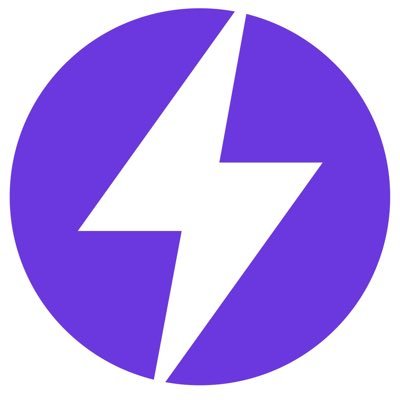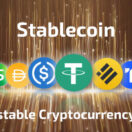Storm is a mobile-based blockchain project that wants to reinvent the global freelancer market. The existing freelance market is a centralized industry dominated by only a few corporate leaders like Upwork, Fiverr, TaskRabbit and Amazon’s Mechanical Turk. Some of these platforms charge fees as high as 40% of a freelancer’s earnings.
There is no doubt that freelancers want to keep more of the money they earn. In the current ecosystem, however, there are just too many middlemen who are making the market needlessly expensive and inefficient.
StormX, the company behind Storm, believes blockchain technology can change these dynamics by making micro-tasking more efficient and implementing a fair rewards program. The company wants to completely remove all middlemen by offering freelancers a decentralized platform with significantly cheaper transaction fees.
StormX already has a mobile app for Android devices called Storm Play, which is a rebranded version of the popular micro-tasking app BitMaker. Storm Play is the user portal into StormX’s micro-tasking marketplace, which will be called Storm Market.
To fulfill its goals and integrate the Storm Play app into the blockchain, StormX has introduced the STORM token. It is an ERC20 token that operates on the Ethereum blockchain and facilitates transactions on the Storm Play app.
STORM Pricing, Market Cap and Trading Volume
STORM has a fixed supply of 10 billion tokens. The tokens were offered to the general public during an ICO that was held in November 2017. The STORM ICO was held in conjunction with the launch of its rebranded Storm Play app. The supply of STORM tokens are distributed as follows:
– 41.74% were offered during the ICO
– 25% are being held by StormX
– 23.26% are stored in reserve with a 2-year blackout period
– 10% will be distributed to users
STORM’s market cap was first listed at ~$52 million USD on December 25, 2017. The value of one STORM token at that time was ~$0.02 USD. At the time of our review, there were 4.1 billion STORM tokens in circulation.
Like most altcoins, the price of STORM tokens experienced a big boost in January of 2018. The value of one token managed to reach ~$0.24 USD at that time which gave it a total market cap of $595 million USD. Since then, STORM’s price has since stabilized and now hovers at ~$0.04 USD. The value of STORM is directly tied to the success of the Storm Play app and will likely go up as more people adopt the platform.
How Storm Works
Storm uses game design elements similar to those implemented by mobile-gaming apps like Candy Crush and Clash of Clans to encourage active participation, enhance the level of engagement, and increase user loyalty. Storm Play will have two core players:
Storm Makers – Users who posts tasks in the Storm Play app. They pay for posts using STORM tokens.
Storm Players – Users who earn “Bolts” for completing tasks. Bolts can’t be transferred off of the marketplace, but they can be converted into STORM and eventually BTC and ETH.
Gamification is meant to make performing tasks on Storm Play more enjoyable. Storm Players can earn Bolts through an experience rewards system for completing tasks, categorizing tasks or helping to rank a task, and managing other Storm Players.
The platform internally conceptualizes the process of a Storm Player going from a new user to a master user as a “journey” or “trek.” The mechanics of a journey focus on helping a Storm Player to become an advocate of the Storm Market platform. Storm Players progress through the following phases:
– Discovery phase
– Onboarding phase
– Getting immersed phase
– Mastery phase and replay
The basic unit of the gamification design process are “action-loops,” which serve to boost user engagement. Storm Makers can offer Storm Players different ways of earning Bolts and Storm Players can track their progress by the number of Bolts they earn. Bolts are like experience points Storm Players accumulate as they complete tasks. After successfully completing a task, a Storm Player levels up and their total number of Bolts as well as their experience rank goes up.
Different action-loops can be designed for each of the phases of the journey to mastery. Once a Storm Player completes an action-loop, they can redeem their aggregated Bolts for STORM tokens.
Storm Play has seen significant growth by providing users with a gamified experience. StormX sees this gamification model as the foundational point for creating an improved marketplace for all sorts of micro-tasks.
Storm Market
The introduction of the Storm Play app marks the first step in the creation of a decentralized marketplace for tasks called Storm Market, which will function like a blockchain version of the Google Play Store or Apple App Store.
The Storm Market will support open-source smart contracts that facilitate transactions in a micro-task marketplace. The market currently only has promotional user engagement tasks, but it will eventually have three types of tasks:
1. Promotional user engagement.
2. Freelance labor, ranging from independent contract-style engagement to micro-tasks.
3. Shopping-related opportunities where users can learn about or sample retail goods and services.
At launch, the Storm Market will remain a centralized platform as the StormX team work on developing smart contracts that will decentralize the process of creating and engaging tasks in the Storm Market. StormX’s ultimate vision is to create a decentralized platform where anyone can offer or engage in tasks using smart contracts that are powered by STORM tokens.
Storm vs. Other Blockhain Platforms
Storm is not the first crypto project to attempt to revolutionize the gig economy by using the blockchain. There are several other projects that are trying to take on the global freelancer industry by leveraging blockchain technology.
For example, Blocklancer is a blockchain-based Freelancer clone that wants to create a self-regulatory distributed autonomous job marketplace. CanYa is a blockchain freelance platform offering both digital and in-home freelancer services (plumbing, etc.).
While most of these projects are attempting to reinvent the wheel, Storm wants to try something completely new by using gamification elements to improve engagement, encourage active participation, and foster user loyalty. That’s its main selling point.
Buying, Storing and Selling STORM
STORM can be acquired from Binance, Upbit, Bittrex, Bancor Network, HitBTC, Coinrail, Coinnest, Kyber Network, YoBit, IDEX, and EtherDelta.
The StormX website lists Jaxx as the official wallet partner for STORM, but since STORM is an ERC20 token, any wallet that supports that standard should also work. That includes MyEtherWallet (MEW), MetaMask, and Mist, and hardware wallets like the Ledger Nano S and Trezor.
Liquidity of Storm
Storm is attempting to tap a lucrative industry in the global marketplace, and it appears to be succeeding. The Storm Play app has a 1 million+ downloads and an impressive 4.1 star-rating on Google Play.
StormX has reportedly managed to grow a micro-tasks marketplace with 250,000+ monthly active Storm Players based in 187 countries. With so much user activity, it’s unsurprising that STORM has good market liquidity.






